Application of the Self-Made Flexible Three-in-One Microsen-Sor to the Laboratory Oven for Immediate Micro-Monitoring of the Roll-to-Roll Process of Polarizing Films
Abstract
:1. Introduction
2. Research Method
2.1. Sensing Principle of Micro Temperature Sensors
2.2. Sensing Principle of Micro Humidity Sensors
2.3. Sensing Principle of Microflow Sensors
2.4. Process Development of Flexible Three-in-One Microsensors
3. Monitoring Module and Calibration of the Self-Made Flexible Three-in-One Microsensor
3.1. Selection of the Development Board of the Monitoring Module
3.2. Calibration of the Micro Temperature Sensor
3.3. Calibration of the Micro Humidity Sensor
3.4. Calibration of the Microflow Sensor
4. Application of the Self-Made Flexible Three-in-One Microsensor to the Laboratory oven for Immediate Micro-Monitoring of R2R Process
4.1. Monitoring Data on the Self-Made Flexible Three-in-One Microsensor
4.1.1. Monitoring Data on Temperature
4.1.2. Monitoring Data on Humidity
5. Conclusions
Author Contributions
Funding
Institutional Review Board Statement
Informed Consent Statement
Data Availability Statement
Acknowledgments
Conflicts of Interest
References
- Bang, J.; Lee, W.S.; Park, B.; Joh, H.; Woo, H.K.; Jeon, S.; Ahn, J.; Jeong, C.; Kim, T.; Oh, S.J. Highly Sensitive Temperature Sensor: Ligand-Treated Ag Nanocrystal Thin Films on PDMS with Thermal Expansion Strategy. Adv. Funct. Mater. 2019, 29, 3047–3055. [Google Scholar] [CrossRef]
- Salmaz, U.; Islam, T.; Sohail, S. A Novel Linear Capacitive Temperature Sensor Using Polydimethylsiloxane. IEEE Trans. Instrum. Meas. 2020, 69, 7887–7894. [Google Scholar] [CrossRef]
- Huang, L.; Chen, J.; Yu, Z.; Tang, D. Self-Powered Temperature Sensor with Seebeck Effect Transduction for Photothermal–Thermoelectric Coupled Immunoassay. Anal. Chem. 2020, 94, 2809–2814. [Google Scholar] [CrossRef] [PubMed]
- Sun, Y.; Di, C.; Xu, W.; Zhu, D. Advances in n-Type Organic Thermoelectric Materials and Devices. Adv. Electron. Mater. 2019, 5, 484–489. [Google Scholar] [CrossRef]
- Yuan, D.; Guo, Y.; Zeng, Y.; Fan, Q.; Wang, P.J.; Yi, P.Y.; Zhu, P.X. Air-stable n-type thermoelectric materials enabled by organic diradicaloids. Angew. Chem. 2019, 58, 4958–4962. [Google Scholar] [CrossRef] [PubMed]
- Zhang, C.; Zhang, Y.; Cao, K.; Guo, Z.; Han, Y.; Hu, W.; Wu, Y.; She, Y.; He, Y. Ultrasensitive and reversible room-temperature resistive humidity sensor based on layered two-dimensional titanium carbide. Ceram. Int. 2021, 47, 6463–6469. [Google Scholar] [CrossRef]
- Ochoa, M.; Rahimi, R.; Zhou, J.; Jiang, H.; Yoon, C.K.; Maddipatla, D.; Narakathu, B.B.; Jain, V.; Oscai, M.M.; Morken, T.J.; et al. Integrated sensing and de-livery of oxygen for next-generation smart wound dressings. Microsyst. Nanoeng. 2020, 6, 41378–41424. [Google Scholar] [CrossRef] [PubMed]
- Zhang, X.; Maddipatla, D.; Bose, A.K.; Hajian, S.; Narakathu, B.B.; Williams, J.D.; Mitchell, M.F.; Atashbar, M.Z. Printed Carbon Nanotubes-Based Flexible Resistive Humidity Sensor. IEEE Sens. J. 2020, 20, 12592–12601. [Google Scholar] [CrossRef]
- Ma, L.; Wu, R.; Patil, A.; Zhu, S.; Meng, Z.; Meng, H.; Hou, C.; Zhang, Y.; Liu, Q.; Yu, R.; et al. Full-Textile Wireless Flexible Humidity Sensor for Human Physiological Monitoring. Adv. Funct. Mater. 2019, 29, 211–218. [Google Scholar] [CrossRef]
- Kamat, A.M.; Jayawardhana, B.; Kottapalli, A.G. PDMS Flow Sensors with Graphene Piezoresistors Using 3D-Printing and Soft Lithography. IEEE Sens. 2020, 20, 978–998. [Google Scholar] [CrossRef]
- Islam, K.; Alam, F.; Zahid, A.I.; Khan, M.M.; InamAbbasi, M. Internet of Things- (IoT-) Based Real-Time Vital Physiological Parameter Monitoring System for Remote Asthma Patients. Wirel. Commun. Mob. Comput. 2022, 2022, 1434–1456. [Google Scholar] [CrossRef]
- Lin, W.-D.; Hong, R.-Y.; Chuang, M.-H.; Wu, R.-J.; Chavali, M. Enhanced performance of humidity sensor based on Gr/hollow sphere ZrO2 nanocomposites. Sens. Actuators A Phys. 2021, 330, 112872–112879. [Google Scholar] [CrossRef]
- Harija, H.; George, B.; Tangirala, A.K. A Cantilever-Based Flow Sensor for Domestic and Agricultural Water Supply System. IEEE Sens. J. 2021, 21, 27147–27156. [Google Scholar] [CrossRef]
- Qin, C.; Dasgupta, P.K. Time-of-Sight Liquid Flow Measurements in the Low Nanoliters per Minute Scale. Anal. Chem. 2019, 94, 14332–14339. [Google Scholar] [CrossRef] [PubMed]
- Mahvi, A.J.; El Fil, B.; Garimella, S. Accurate and inexpensive thermal time-of-flight sensor for measuring refrigerant flow in minichannels. Int. J. Heat Mass Transf. 2019, 132, 184–193. [Google Scholar] [CrossRef]
- Kasai, T.; Momotani, K.; Nakano, Y.; Nakao, H. Improvement of thermal-type MEMS flow sensor chip via new process of silicon etching with sacrificial polycrystalline silicon layer. Electr. Eng. Jpn. 2021, 214, 214–222. [Google Scholar] [CrossRef]
- Lee, C.-Y.; Lee, S.-J.; Chen, C.-H.; Yang, L.-J.; Wang, X.-W.; Lin, J.-T.; Chao, P.-Y.; Chen, S.-Y. Application of Monitoring Module Three-in-One Microsensor to Real-Time Microscopic Monitoring of Polarizer Sheet in Roll-to-Roll Process. Processes 2022, 10, 900. [Google Scholar] [CrossRef]
- Anandanatarajan, R.; Mangalanathan, U.; Gandhi, U. Performance enhancement and fault identification using Kalman filter in a resistive temperature sensor interface. Measurement 2021, 183, 109836–109842. [Google Scholar] [CrossRef]
- Lee, C.-Y.; Chen, C.-H.; Chiu, C.-Y.; Yu, K.-L.; Yang, L.-J. Application of Flexible Four-In-One Microsensor to Internal Real-Time Monitoring of Proton Exchange Membrane Fuel Cell. Sensors 2018, 18, 2269. [Google Scholar] [CrossRef] [PubMed] [Green Version]
- Lee, C.Y.; Chen, C.H.; Li, S.C.; Wang, Y.S. Development and application of flexible integrated microsensor as real-time mon-itoring tool in proton exchange membrane water electrolyzer. Renew. Energy 2019, 143, 906–914. [Google Scholar] [CrossRef]



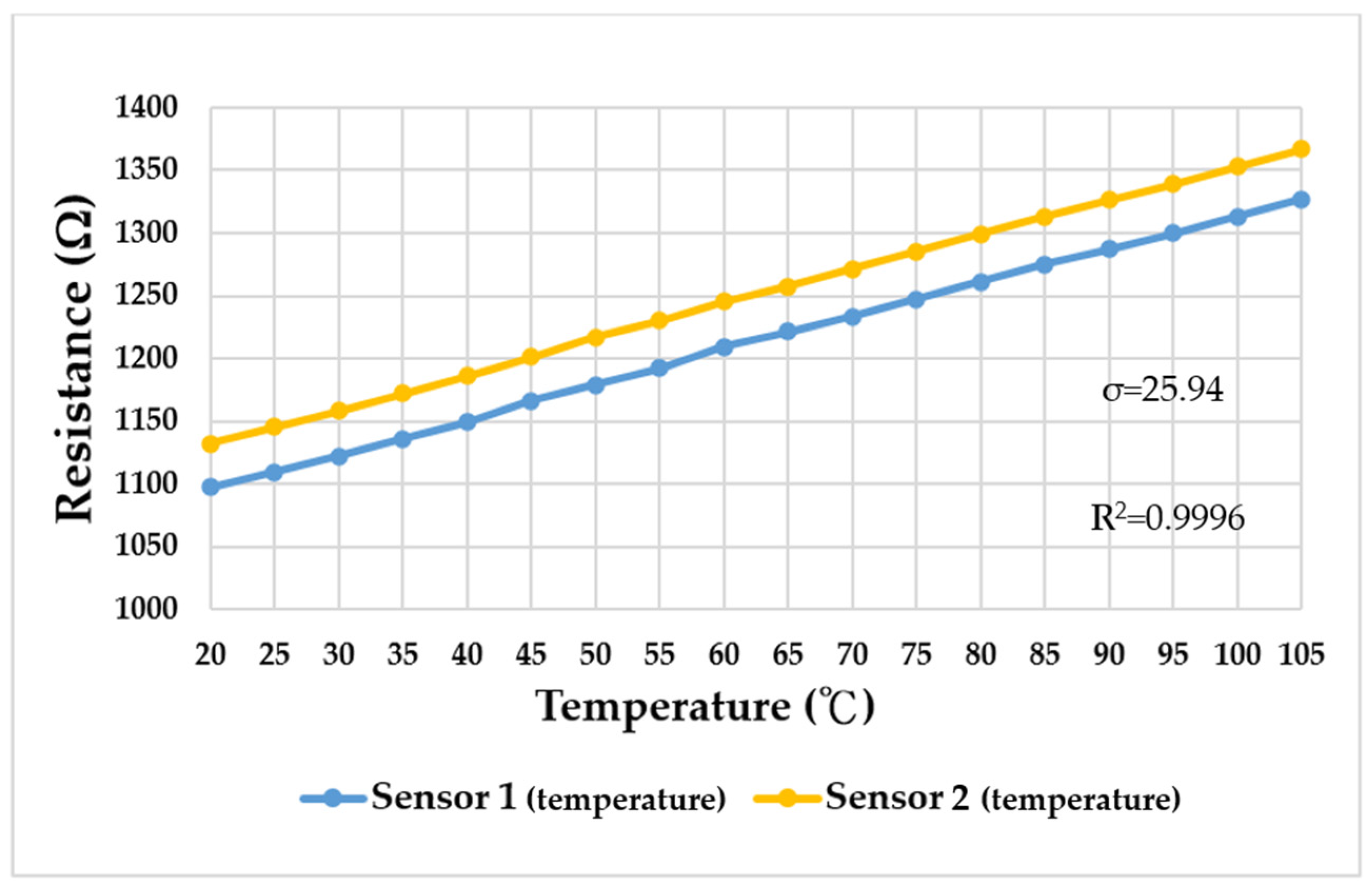
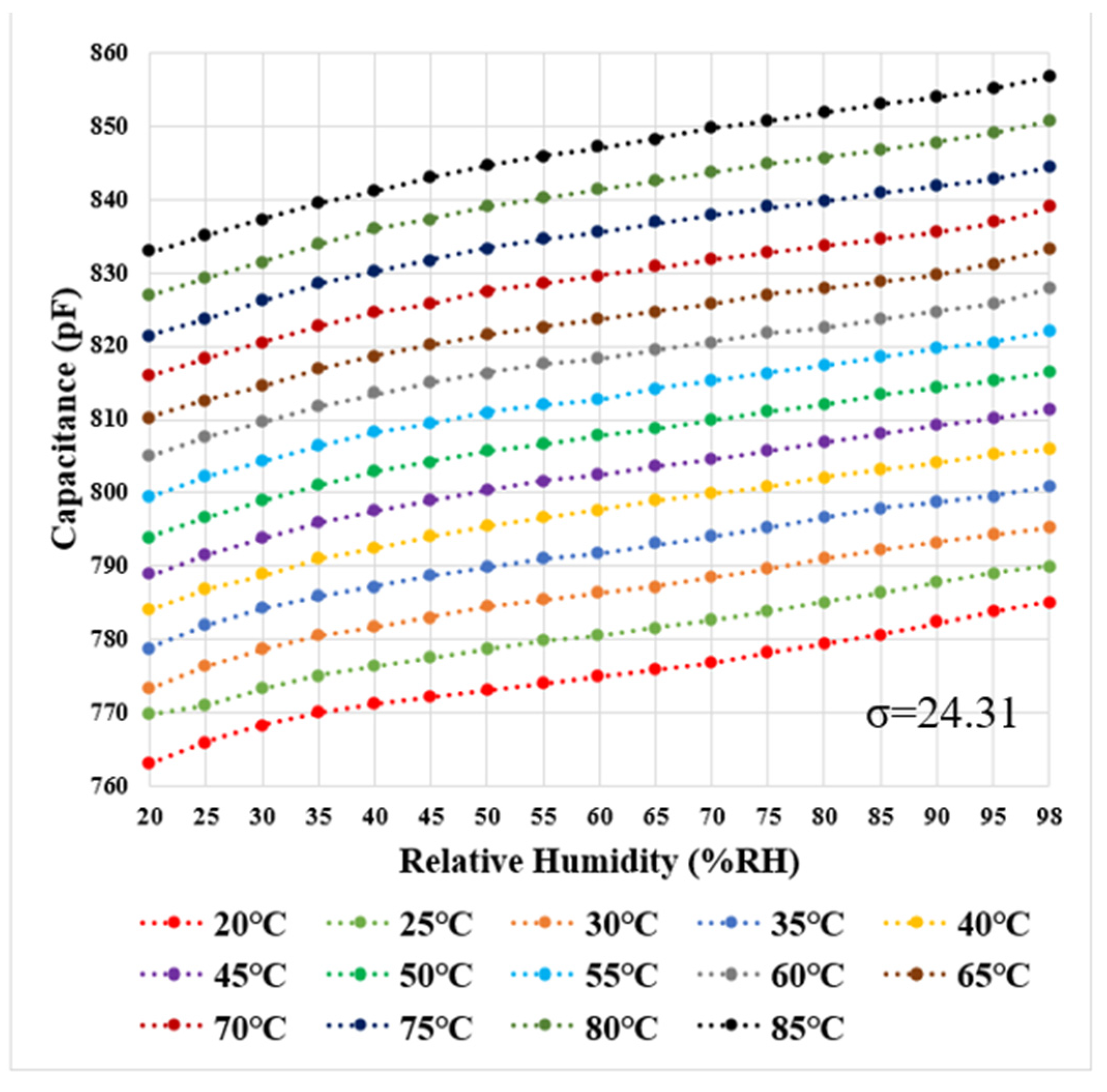
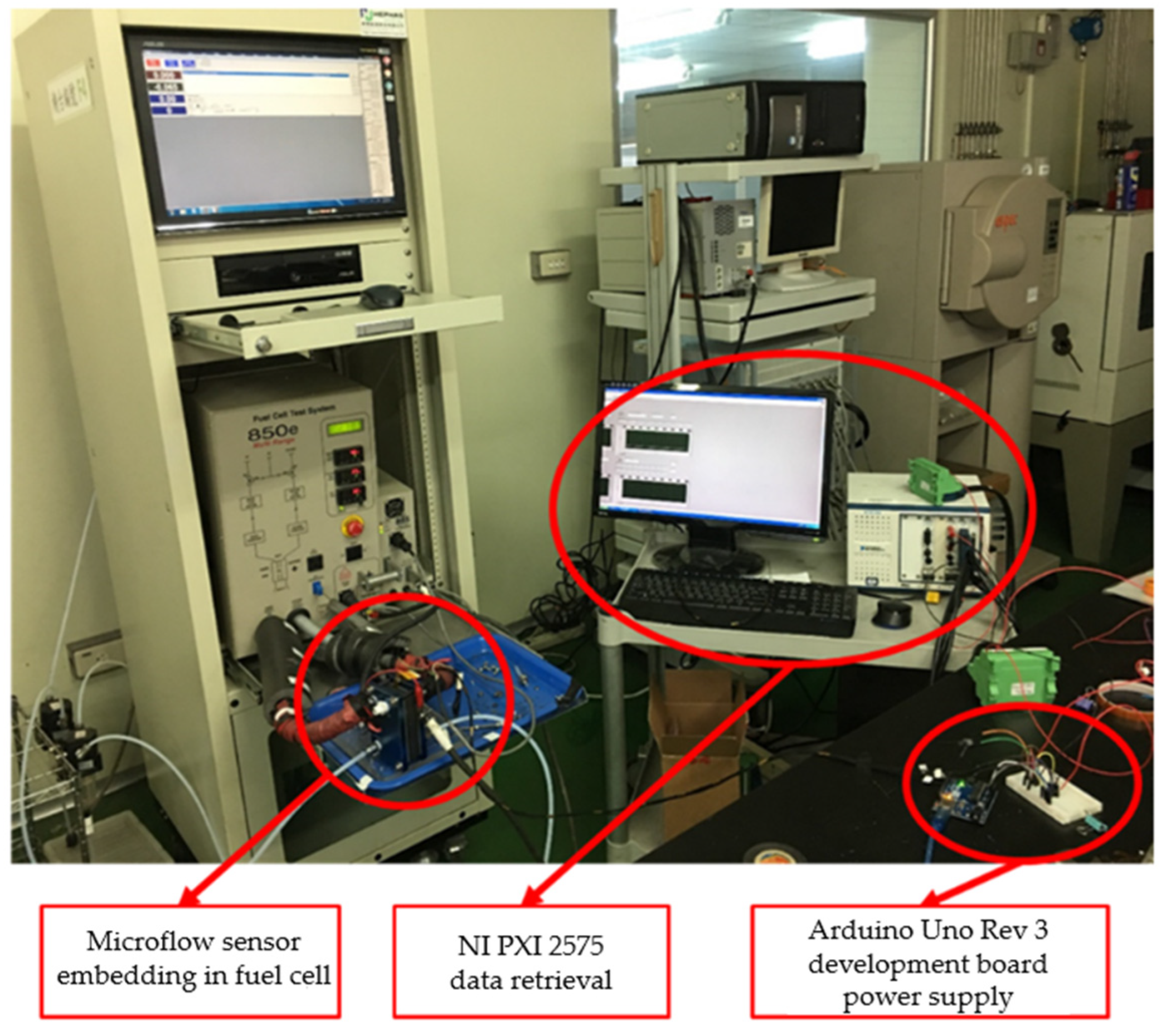
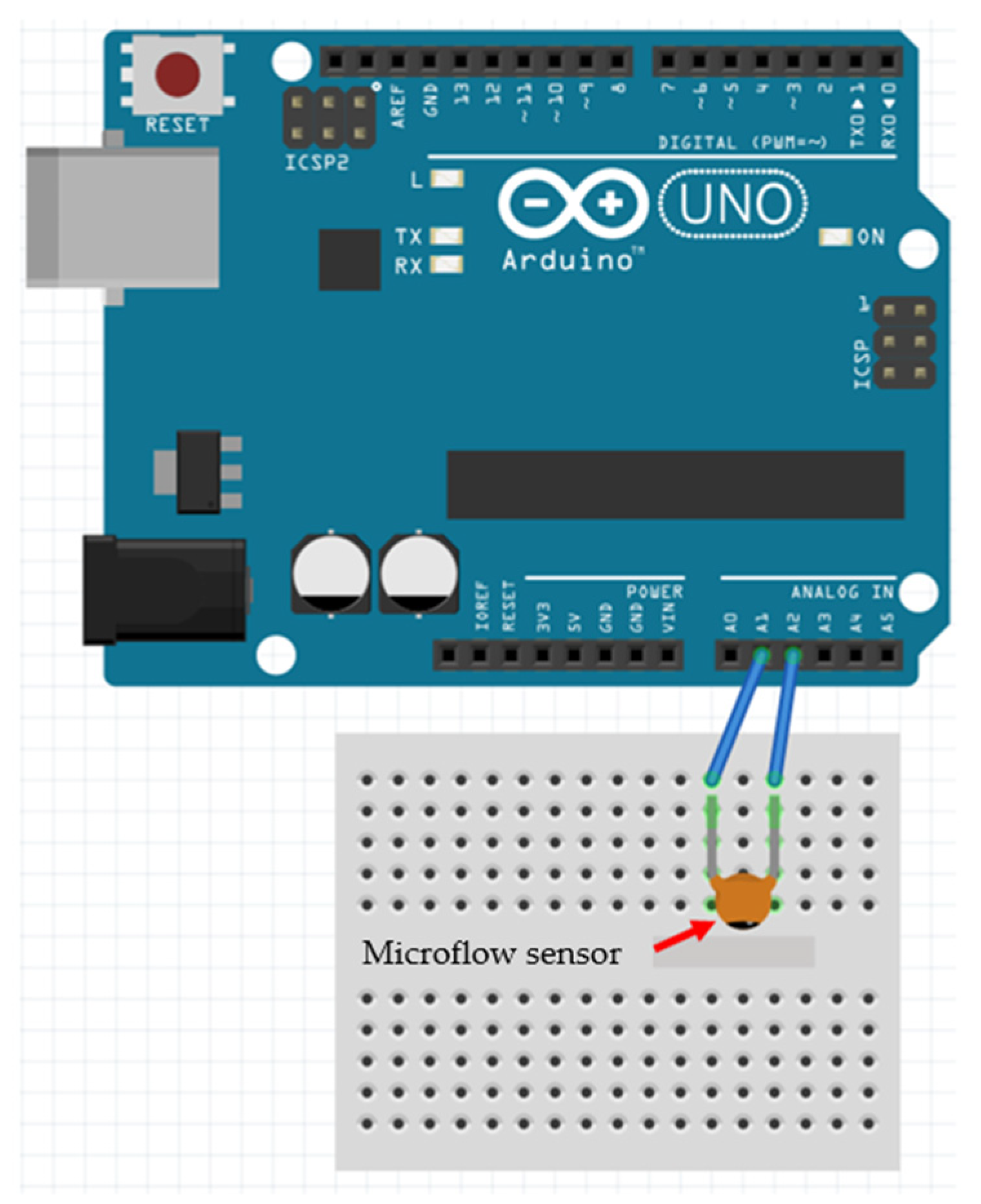

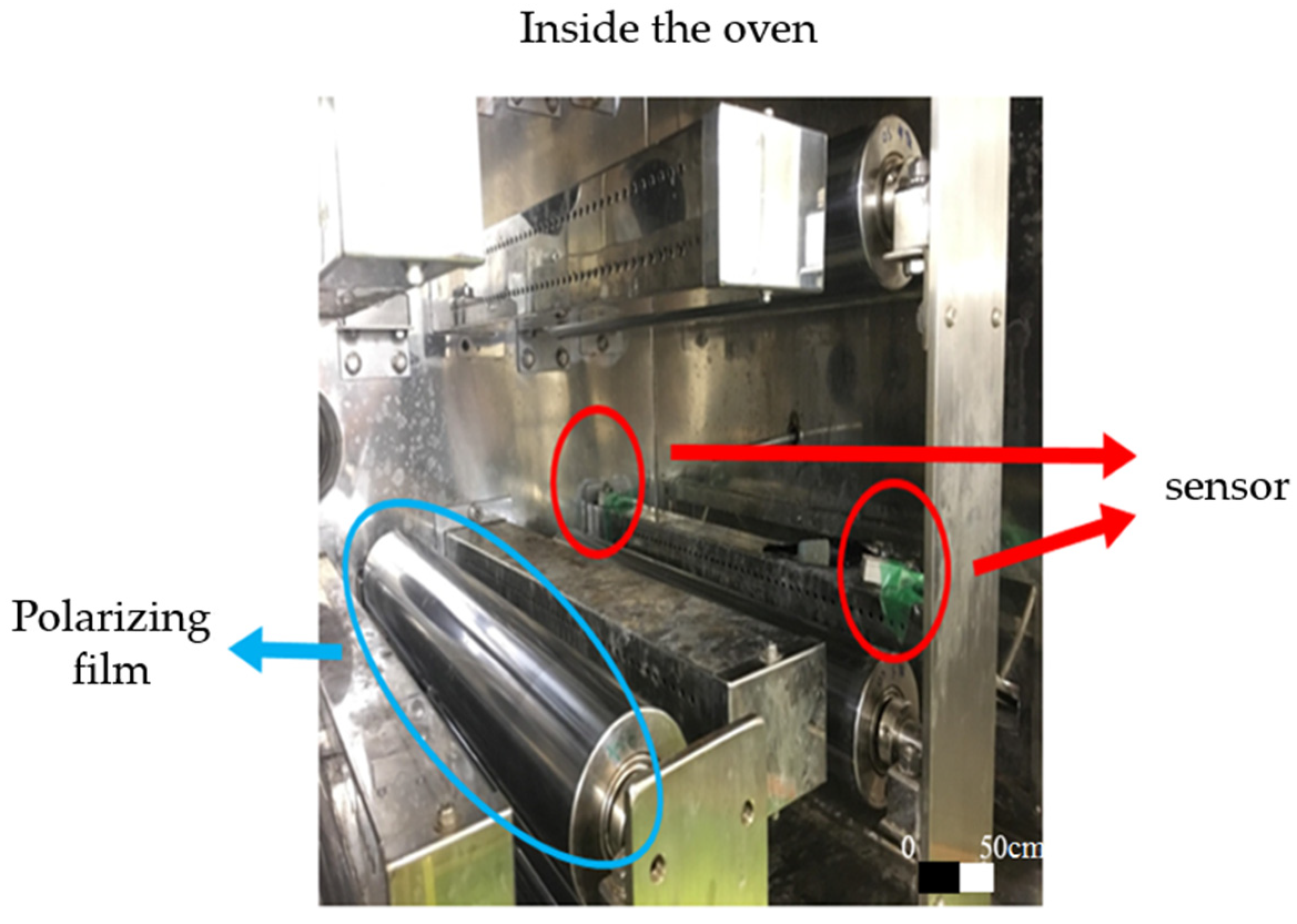
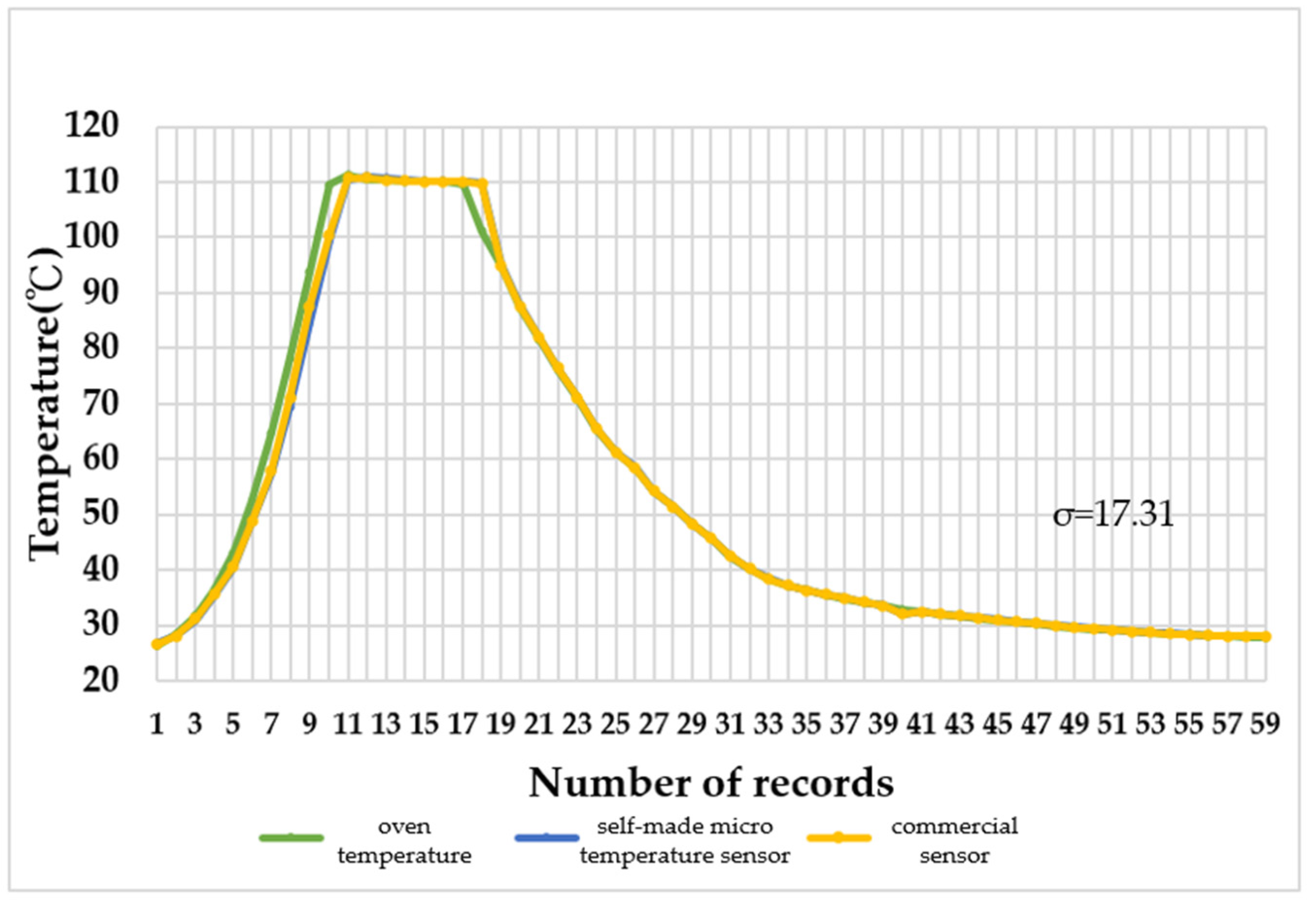

Disclaimer/Publisher’s Note: The statements, opinions and data contained in all publications are solely those of the individual author(s) and contributor(s) and not of MDPI and/or the editor(s). MDPI and/or the editor(s) disclaim responsibility for any injury to people or property resulting from any ideas, methods, instructions or products referred to in the content. |
© 2023 by the authors. Licensee MDPI, Basel, Switzerland. This article is an open access article distributed under the terms and conditions of the Creative Commons Attribution (CC BY) license (https://creativecommons.org/licenses/by/4.0/).
Share and Cite
Lee, C.-Y.; Liu, C.-K.; Lin, J.-T. Application of the Self-Made Flexible Three-in-One Microsen-Sor to the Laboratory Oven for Immediate Micro-Monitoring of the Roll-to-Roll Process of Polarizing Films. Coatings 2023, 13, 83. https://doi.org/10.3390/coatings13010083
Lee C-Y, Liu C-K, Lin J-T. Application of the Self-Made Flexible Three-in-One Microsen-Sor to the Laboratory Oven for Immediate Micro-Monitoring of the Roll-to-Roll Process of Polarizing Films. Coatings. 2023; 13(1):83. https://doi.org/10.3390/coatings13010083
Chicago/Turabian StyleLee, Chi-Yuan, Chen-Kai Liu, and Jyun-Ting Lin. 2023. "Application of the Self-Made Flexible Three-in-One Microsen-Sor to the Laboratory Oven for Immediate Micro-Monitoring of the Roll-to-Roll Process of Polarizing Films" Coatings 13, no. 1: 83. https://doi.org/10.3390/coatings13010083



